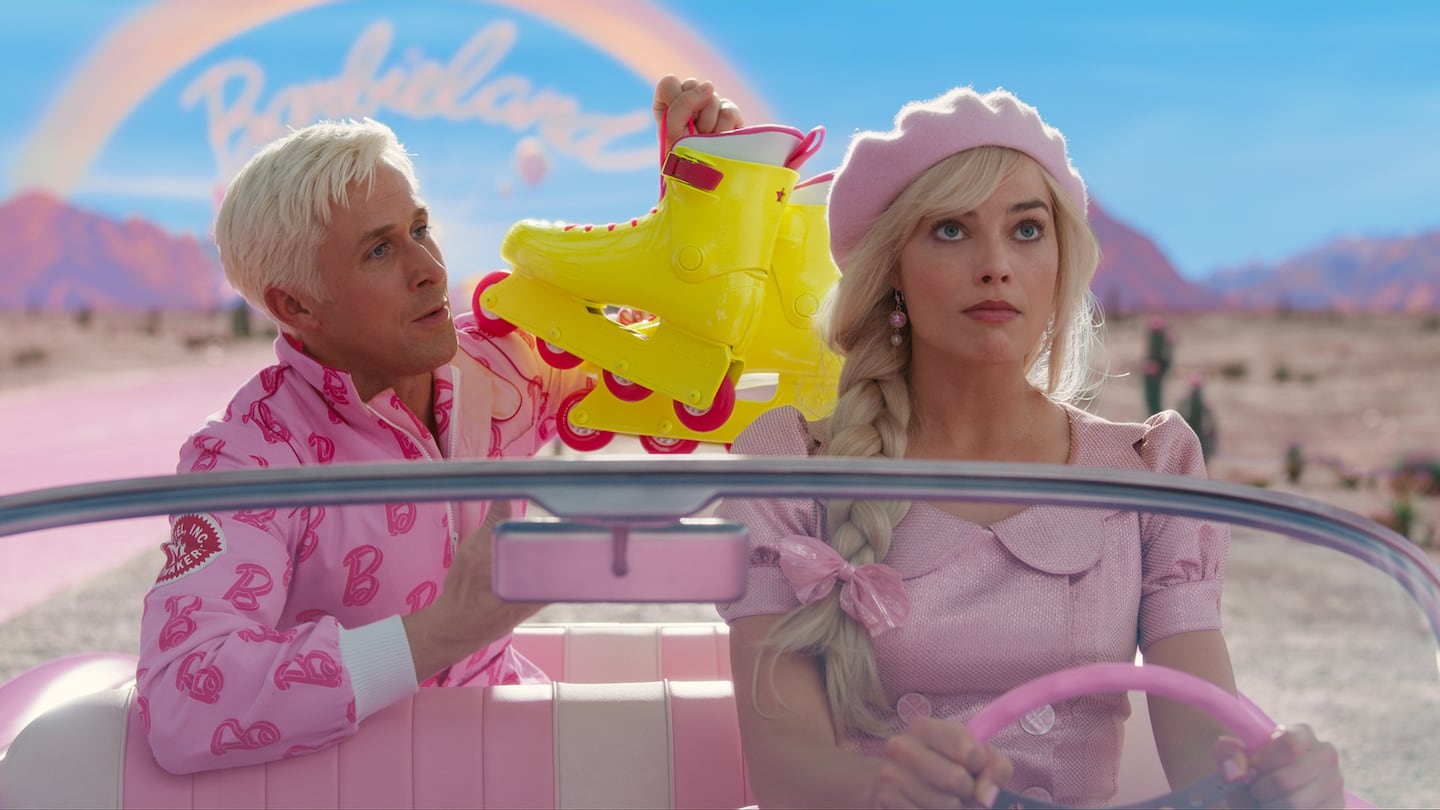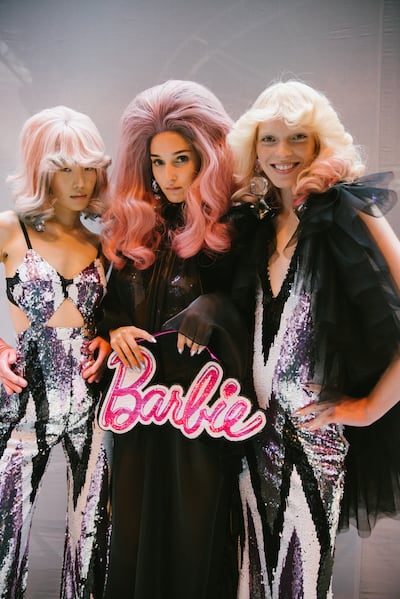
The Business of Fashion
Agenda-setting intelligence, analysis and advice for the global fashion community.

Agenda-setting intelligence, analysis and advice for the global fashion community.

Right now, consumers are living in a “Barbie” world. That’s something the brand’s owner, Mattel, has worked to make sure of.
In addition to a global marketing push for director Greta Gerwig’s much-anticipated film, which is being rolled out to cinemas globally this week, a spate of Barbie collaborations are now flooding the market.
From Gap, Boohoo and Zara, to Pinkberry and Burger King, brands from fashion to beauty to homewares have all gotten in on collaborating with the film starring Margot Robbie and Ryan Gosling. DTC paint store Backdrop is selling “Dream House Pink” wall paint. Crocs made a co-branded pair of its signature clogs, adding pink glittery soles. London retailer Selfridges even built a life-size Barbie Dream House in store, where shoppers can rent looks inspired by different Barbies over the years.
For Barbie’s owner Mattel, the release marks a watershed moment as the company works to give the cultural relevancy of its flagship brand a boost, while also finding new ways to cash in on its prime piece of intellectual property beyond plastic toys and licensed kidswear.
ADVERTISEMENT
“For any brand to own a colour is a pretty powerful statement and recognition,” Mattel’s president and chief operating officer Richard Dickson said. “People aren’t calling it pink-core, they’re calling it Barbie-core. That becomes a very powerful place to be.”
As a fashion doll with a fashion habit, the fact that Barbie’s wardrobe takes centre stage in the film should come as no surprise. Barbie has a fresh look for every occasion, whether it’s a day at the beach, snowmobiling through a blizzard or head-to-toe Chanel (a nod to Robbie’s close relationship with the French brand).

In stores, it’s easy for Barbie fans to adopt the look: Mattel has partnered with over 100 brands and retailers on collaborations to satisfy every appetite: from Zara, which sells a lookalike of Barbie’s pink gingham dress for €50 ($56), to Impala, which is selling the movie’s neon-yellow rollerblades for €190 ($213).
For brands, collaborations with Barbie are a way to tap into a major cultural phenomenon surrounding the summer’s biggest film. On the red carpet, luxury names are getting in on the action, with Margot Robbie wearing looks from the likes of Valentino, Vivienne Westwood and Versace during the press tour.
In the past, Chanel has been jibed on social media for dressing Robbie in looks that some fans say feel at-odds with her personal style. But the brand could now scoop up the spoils of its big bet on the Australian-born star, who has been a Chanel ambassador since 2018 and stars in the brand’s new ad campaign for its J12 watch.
For Barbie’s parent company, the plethora of collaborations — which are a mix of licensing deals and joint ventures, Dickson said — are more than just a tool to promote the film. It’s a way to keep the brand front and centre while providing an opportunity and grow the reach of the Barbie brand beyond the core consumer audience for its fashion dolls.
“It gives us the opportunity to monetise the brand outside of the toy aisle,” Dickson said. “Despite the fact there’s a big list of partners, it’s a very carefully curated matrix across all industries, ages, stages, demographics, distribution, so that everyone can ‘play Barbie.’”
As Barbie-mania rises to a fever pitch, it seems that adult consumers are more than happy to splurge on the franchises fashion merch. Within hours of Zara dropping its Barbie collection, a capsule of looks inspired by the outfits Robbie wears in the film, most pieces had sold out. Other collaborations with Crocs, Aldo and Gap are out of stock too.
ADVERTISEMENT
The current Barbie frenzy is “the perfect collision of a bunch of trends,” said Katie Thomas, who leads Kearney Consumer Institute at strategy and consulting firm Kearney. In addition to the film, customer nostalgia, Barbie-core’s popularity on Tiktok, and influential brands pushing hot pink on the runway have all played a role.
For Mattel, the moment represents the crescendo of a years-long turnaround effort to rehabilitate the Barbie name, which had fallen out of favour with consumers. By the late 2000s, Barbie had become a brand that was perceived as outdated, at odds with feminist values and female empowerment. By 2014, Barbie doll sales hit a historic low after three consecutive years of declines.

It prompted Mattel to embark on a major turnaround to renew its flagship brand, spearheaded by Dickson, a fashion and retail veteran who started his career at Bloomingdales. Barbie herself became more diverse, represented through a greater variety of ethnicities and body shapes. The messaging shifted too — an effort continued throughout the movie, which pokes fun at a lot of the stereotypes surrounding the doll.
Last year Barbie was the number-one doll brand globally, and the number-two toy brand overall, Mattel said, citing data from third-party market surveys.
Fashion collaborations were a key part of the marketing strategy designed to help push the Barbie brand back into the spotlight: a tie-up with Jeremy Scott, who designed a Barbie-themed collection for Spring/Summer 2015, was a hit on social media at the time. Since then, the brand has also collaborated with Vera Wang, Tommy Hilfiger, Halpern and Balmain.
Still, none of these efforts came close to the hype happening now. The film represents the pinnacle of their effort to reposition Barbie, and Mattel is making a cross-market push to cash in.
“It can be really hard to make that decision between being a bit elusive and strategic, and then being ubiquitous,” Thomas said. “The Barbie team clearly just leaned into the sheer ubiquity of it all, which I think ultimately was the right play.”
Mattel, whose core business is already dolls and other toys, is in an advantageous position: rarely is a franchise so well poised to effectively capitalise on hype of a new film release through retail.
ADVERTISEMENT
“Ultimately, they sell products,” retail strategy consultant Wizz Selvey said. “They saw the opportunity for collaboration and knew the scale of the impact they could potentially have, by having lots of product launches out there.”
While doll sales still drive the majority of Barbie revenues, Dickson said the fastest growing segment of the brand is the collaborations and partnerships business, although he declined to share specific figures. (Mattel does not break out figures for individual brands.)
Analysts estimate the new film could gross between $450 million and $550 million globally, up from previous estimates of about $325 million — that could translate to higher profits for Mattel too. The company’s stock has gained about 13 percent since the start of the year.
How long Barbie-mania can last remains to be seen. In the immediate future, the broader reception for the movie will likely be an important factor on whether “Barbie” remains front-and-centre.
Dickson still sees opportunity in the longer-term. After Barbie, Mattel plans to leverage the other brands in its portfolio in a similar way: a Hot Wheels movie is already in the works, Dickson said. No doubt, an abundance of product collaborations will soon follow.
“It grows the reach of our brands,” Dickson said. “The age is elastic, [through targeted collaborations] we can appeal to a variety of different ages and stages.”
A new teaser for the Margot Robbie-fronted Barbie movie has kicked off more frenzy around the film. It’s also setting up a showdown between two of the hottest TikTok trends of the moment: quiet luxury and Barbiecore.
BoF explains why online trends from cottagecore and quiet luxury to barbiecore and coastal grandmother bubble up and spread out — and how brands can find their footing in the fast-moving, jumbled space.
Calvin Klein’s chief marketing officer Jonathan Bottomley speaks to Imran Amed about the strategy behind the brand’s buzzy Jeremy Allen White-fronted campaign.
Often left out of the picture in a youth-obsessed industry, selling to Gen-X and Baby Boomer shoppers is more important than ever as their economic power grows.
This month, BoF Careers provides essential sector insights to help PR & communications professionals decode fashion’s creative landscape.
The brand’s scaled-back Revolve Festival points to a new direction in its signature influencer marketing approach.